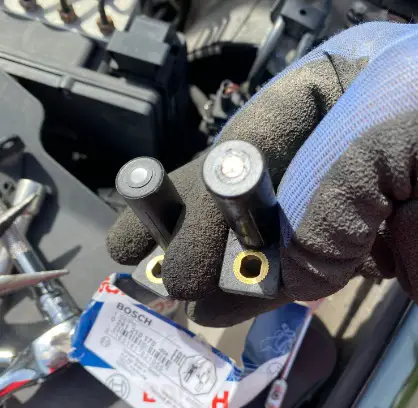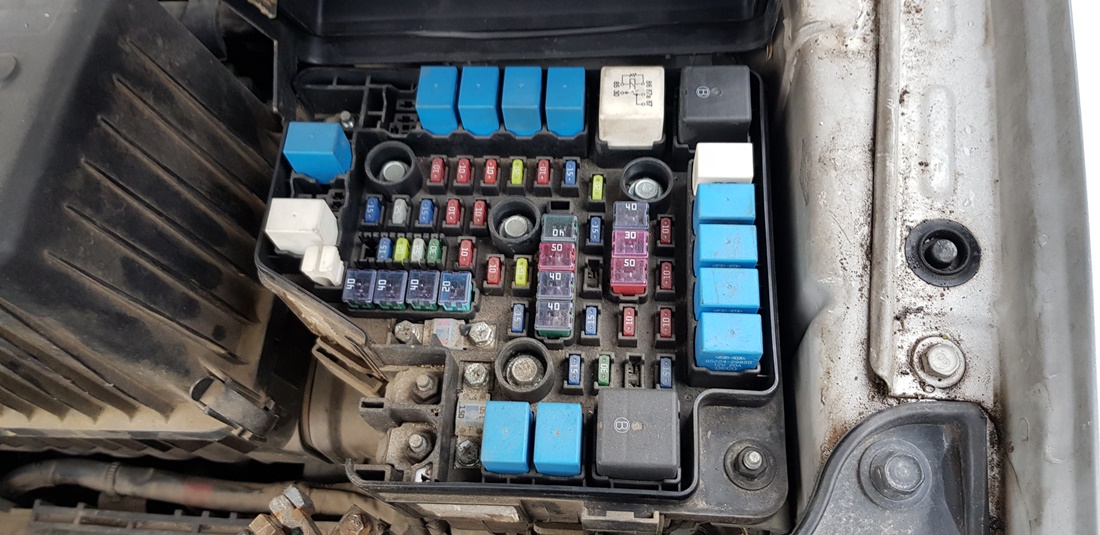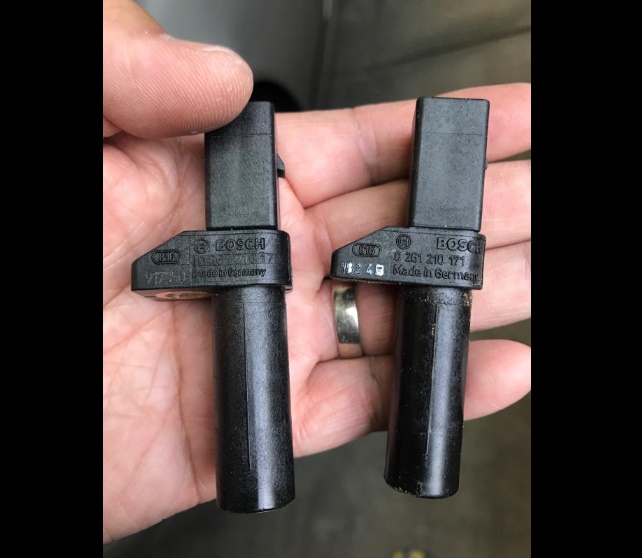Are you having trouble filling your fuel tank? Is your fuel pump shutting off preventing you from filling your fuel tank?
Here is why your fuel tank is not filling up and how to fix it.
Key Takeaway
- The most common reason why your fuel tank is not filling up is because you have a clogged or faulty evaporative emissions control system (EVAP).
- The EVAP is designed to collect and store the fuel vapors from the fuel tank and move them to the intake manifold for combustion.
- If your EVAP is clogged or faulty, you won’t be able to fill your gas tank.
What Are Fuel Tanks In Cars

Fuel tanks in cars are storage containers designed to hold the fuel needed to power the vehicle.
They are typically made of metal or plastic and are located towards the rear of the vehicle, underneath, or behind the trunk.
Fuel tanks are securely sealed to prevent fuel leakage and are equipped with various components such as fuel pumps, fuel level sensors, and venting systems to ensure proper fuel delivery to the engine.
The size of a car’s fuel tank can vary depending on the make and model, with smaller vehicles generally having smaller fuel tanks and larger vehicles having larger capacities to accommodate longer distances between refueling.
Why Is My Fuel Tank Not Filling Up?

If your fuel tank is not filling up properly, one of the most common reasons could be a clogged or faulty evaporative emissions control system, also known as the EVAP system.
Over time, dirt and debris can accumulate in the EVAP system, causing it to become clogged and preventing the proper flow of fuel into the tank.
Another potential issue could be a problem with the vent or purge system for the fuel, which can result in difficulties filling up the tank.
It is also worth considering the possibility of a faulty gauge or sender, as well as the design of the filler neck, which can sometimes impede the flow of fuel.
To determine the exact cause and resolve the issue, it is advisable to consult a professional mechanic who can diagnose the problem and provide the appropriate solution.
What Is the EVAP System?
The EVAP (Evaporative Emission Control) system is a component in a vehicle that helps to reduce the emissions of fuel vapors into the atmosphere.
It is designed to capture and store fuel vapors from the fuel tank, preventing them from escaping into the air.
The EVAP system consists of several components, including the fuel tank, charcoal canister, purge valve, vent valve, and various hoses and lines.
When the engine is running, the EVAP system allows the fuel vapors to be drawn into the engine and burned as part of the combustion process, rather than being released into the environment.
This system is essential for reducing harmful emissions and ensuring compliance with environmental regulations.
How Do I Fix My Gas Tank Not Filling?
If your EVAP system is faulty or clogged, you won’t be able to fill your fuel tank. The fuel pump will just constantly shut off preventing you from filling your fuel tank, or just filling it little by little. Here is how to fix a fuel tank that is not filling properly.
1. Run vehicle diagnostics with a scan tool

If your fuel tank is not filling up, it is probably the EVAP system. Just to be sure, you can run diagnostics on your vehicle with a scan tool. The P0440 error code is associated with an EVAP malfunction. If you don’t have a scan tool, you can go ahead and proceed with the following steps.
2. Clean the area around the fuel tank cap

The EVAP system can get dirty and clogged from constantly working. Personally, I didn’t care about the area around my fuel tank cap. It was always dirty until one day I got my EVAP system clogged from all the dirt. It is easy for the dirt to get inside the fuel tank. Make sure to clean your fuel tank cap area every time you wash your vehicle.
3. Locate the Evaporative emissions control canister

On almost all vehicles, the EVAP canister is located in the engine bay. If your vehicle is lifted on jack stands, you can just follow the hoses from the fuel tank into the engine bay area. Or, you can read your manufacturer’s manual and see where your EVAP canister is located. The EVAP canister can look different than shown in the image.
4. Clean the hose connecting to the EVAP canister

Once you locate the EVAP canister, remove the hose that is connected to the canister. You need to clean the hose and the connector on the canister with a paper towel. Wipe the hose and the connector and make sure there are no huge pieces of debris. You can also blow it with an air compressor.
5. Try filling your fuel tank with gas
Go to the gas station and fill your fuel tank. If you only had a clogged hose, you should be able to fill your gas tank. If it still not working, you might need to change the charcoal canister.
6. Get your EVAP charcoal canister replaced

The hose that you cleaned from the previous step is connected to a canister that is full of charcoal. When the air is pushed through there, it vents hydrocarbons out of the air and then just vents pure air into the atmosphere.
This prevents the gas fumes from polluting the atmosphere. When the EVAP charcoal canister is clogged, it has to be replaced with a new one.
Symptoms of a Clogged Fuel System
- Difficulty starting the engine or engine hesitation.
- Reduced engine performance and power.
- Engine stalling or sputtering during acceleration.
- Rough idle or uneven engine operation.
- Decreased fuel efficiency and poor mileage.
- Fuel odor inside or around the vehicle.
- Engine misfires or backfires.
- Illuminated check engine light.
- Difficulty or inability to accelerate smoothly.
- Fuel filter clogging or frequent fuel filter replacements.
How To Prevent Gas Tank Not Filling Up All the Way?
- Avoid overfilling the tank by stopping fueling once the pump automatically shuts off.
- Ensure that the filler neck and gas cap are free from debris, dirt, or any obstructions that could impede the fuel flow.
- Regularly inspect and maintain the EVAP system components, such as the charcoal canister, purge valve, and vent valve, to prevent clogs or malfunctions.
- Use high-quality fuel from reputable stations to minimize the chances of fuel contamination or poor fuel quality.
- Keep the fuel tank and surrounding areas clean to prevent the accumulation of dirt or debris that could affect the fueling process.
- If you suspect a problem with the fuel system, such as a clogged vent or faulty gauge, have it inspected and repaired by a qualified mechanic.
- Avoid filling up the tank during extremely hot weather as the increased temperature can cause fuel expansion and possible overflow.
- Follow the manufacturer’s recommendations for fueling procedures and any specific instructions or warnings related to your vehicle’s fuel system says Mechanics.
Why You Shouldn’t Overfill Your Gas Tank
”You shouldn’t overfill your gas tank because once the fuel pump shuts off, pouring more gas could get in the EVAP canister and clog it up. You cannot clean the EVAP canister, only replace it.”
Modern vehicles have what is called EVAP systems. Instead of the gasoline vapor escaping to the atmosphere, it’s recycled and burned inside the engine. The EVAP canister filters out the hydrocarbons and lets pure air come out when it needs to filter it out.
These EVAP canisters work great for filtering out gasoline fumes. But, if you are filling your gas tank and the fuel pump shuts off, if you pump extra in, you can pump liquid gasoline and that will get into the EVAP canister. If liquid gasoline gets inside these EVAP canisters, it destroys them.
Replacing an EVAP canister can cost as much as $380 and another $240 for labor. So, you don’t want to waste all that money just because you put extra gas in the car says CNET. These canisters are getting smaller and smaller, so just a little bit of gasoline can ruin them.
Remember, once the fuel pump goes off, do not pour more gas in the fuel tank.
Where Is The EVAP Canister Located?
The EVAP (Evaporative Emission Control) canister is typically located beneath the vehicle, near the rear of the car and in front of the fuel tank. Its exact positioning may vary depending on the make and model of the vehicle.
FAQs
Q: Why is my fuel tank not filling up all the way?
A: There could be several reasons why your fuel tank is not filling up completely. It could be due to a faulty fuel pump, a clogged filler neck, a malfunctioning vent valve, or a problem with the fuel gauge. It is best to have a mechanic diagnose and fix the issue.
Q: What causes a gas tank not to fill up?
A: A gas tank may not fill up due to issues with the fuel system or the evap system. Common causes include a faulty gas cap, a malfunctioning purge valve, a clogged charcoal canister, or a problem with the vent valve. Consulting a mechanic can help determine the exact cause and provide a solution.
Q: Why can’t I fill up my gas tank fast?
A: If you are unable to fill up your gas tank quickly, it may be due to a problem with the fuel pump or a restriction in the fuel system. It is recommended to get your vehicle inspected by a mechanic to diagnose and resolve the issue.
Q: How do I fix a gas tank that is not filling up properly?
A: Fixing a gas tank that is not filling up properly can depend on the underlying cause. It is recommended to take your vehicle to a mechanic who can diagnose the issue and provide the necessary repairs. Common fixes may include replacing a faulty fuel pump, cleaning the evap system, or repairing a clogged vent valve.
Q: What should I do if my fuel tank is not filling up completely?
A: If your fuel tank is not filling up all the way, it is best to have your vehicle inspected by a qualified mechanic. They can identify the specific cause of the problem, such as a faulty fuel pump or a clogged vent, and perform the necessary repairs to ensure your tank fills up properly.
Q: Why does my fuel tank not fill up when I go to the gas station?
A: If your fuel tank does not fill up properly when you go to the gas station, it could be due to a variety of reasons such as a malfunctioning fuel pump, a clogged fuel filler neck, or issues with the evap system. It is advised to consult a mechanic to diagnose and fix the problem.
Q: What can cause a fuel tank not to fill up completely?
A: Several factors can contribute to a fuel tank not filling up completely. Some common causes include a faulty fuel pump, a clogged fuel filler neck, a malfunctioning vent valve, or issues with the evap system. It is recommended to have a mechanic inspect your vehicle to identify the specific cause and provide a solution.
Q: How can I fix a gas tank that won’t fill up all the way?
A: Fixing a gas tank that won’t fill up all the way depends on the underlying cause. It is best to consult a mechanic who can diagnose the issue and offer the appropriate repairs or replacements. This may involve fixing a faulty fuel pump, clearing a clogged filler neck, or addressing issues with the evap system.
Q: What should I do if my fuel tank does not fill up completely?
A: If your fuel tank does not fill up completely, it is recommended to seek the help of a mechanic. They can identify the root cause of the problem, such as a faulty fuel pump or a clogged vent valve, and perform the necessary repairs to ensure your tank fills up properly.
Q: Why does the pump shut off before my fuel tank is full?
A: The pump shutting off before your fuel tank is full may indicate a problem with the evap system or the fuel system. It could be due to a malfunctioning vent valve, a clogged filler neck, or issues with the fuel pump. It is advisable to have a mechanic inspect your vehicle to determine the cause and provide the appropriate solution.
In Conclusion
Fuel tanks are an essential part of maintaining a vehicle that is in good running condition.
It can be difficult to diagnose why your fuel tank won’t fill up, as it could be due to several different issues.
Fortunately, this guide has provided you with the necessary information to help identify and fix the problem.




